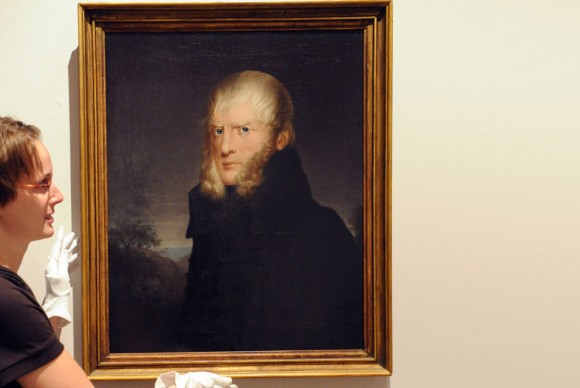Pomeranian State Museum to Open Exhibition by Three Masters of German Romanticism
August 23, 2010 by All Art News
Filed under Art Events & Exhibitions, Featured
GREIFSWALD.- Their fathers were said to be appalled by their sons´ decision to become artists. But the three young men, dreaming of a new way to express art, were determined to implement their plans. Ultimately their parents gave way. Caspar David Friedrich (1774-1840), son of a candle-maker and soap-boiler from Greifswald, Philipp Otto Runge (1777-1810), born to a family of shipbuilders, and Friedrich August von Klinkowstrom (1778-1835), descendant of a Prussian officer in Ludwigsburg, would later become the most important painters of the early German Romanticism. Now the Pomeranian National Museum in Greifswald is dedicating an exhibition for the first time to these painters.
For three months the museum will exhibit a compilation of 20 paintings and 80 drawings on loan from museums and private collectors from all over Europe for this unique project. The visitor is expected not only to see rarely or never exhibited works and studies, but rather to learn information about the years of friendship of the three masters.

- A staff member of Pomeranian State Museum hands a self-portait of Caspar David Friedrich at Pomeranian State Museum in Greifswald, Germany. The painting is on display in the exhibition ‘The Birth of Romanticism’running from 28 August to 21 November 2010 that features works of Caspar David Friedrich, Philipp Otto Runge and Friedrich August von Klinkowstroem. EPA/STEFANSAUER
Highlights include Friedrich´s canvas “Meadows near Greifswald” (1820-1822), once acquired by the Hamburg Kunsthalle from the family and now after over 100 years, for the first time, it will be shown in Friedrich´s hometown. The National Gallery in Oslo sent Friedrich´s “Greifswald in Moonlight” (1816/1817), and the State Museum in Schwerin loaned “Winter Landscape” (1811).
Caspar David Friedrich is best known for his mid-period allegorical landscapes which typically feature contemplative figures silhouetted against night skies, morning mists, barren trees or Gothic ruins. His primary interest as an artist was the contemplation of nature, and his often symbolic and anti-classical work seeks to convey a subjective, emotional response to the natural world. Friedrich’s work characteristically sets the human element in diminished perspective amid expansive landscapes, reducing the figures to a scale that, according to the art historian Christopher John Murray, directs “the viewer’s gaze towards their metaphysical dimension”.
In the philosophy, art, and culture of German-speaking countries, German Romanticism was the dominant movement of the late 18th and early 19th centuries. German Romanticism developed relatively late compared to its English counterpart, coinciding in its early years with the movement known as German Classicism or Weimar Classicism, which it opposed. In contrast to the seriousness of English Romanticism, the German variety is notable for valuing humor and wit as well as beauty.
The early German romantics tried to create a new synthesis of art, philosophy, and science, looking to the Middle Ages as a simpler, more integrated period. As time went on, however, they became increasingly aware of the tenuousness of the unity they were seeking. Later German Romanticism emphasized the tension between the everyday world and the seemingly irrational and supernatural projections of creative genius. Heinrich Heine in particular criticized the tendency of the early romantics to look to the medieval past for a model of unity in art and society.
